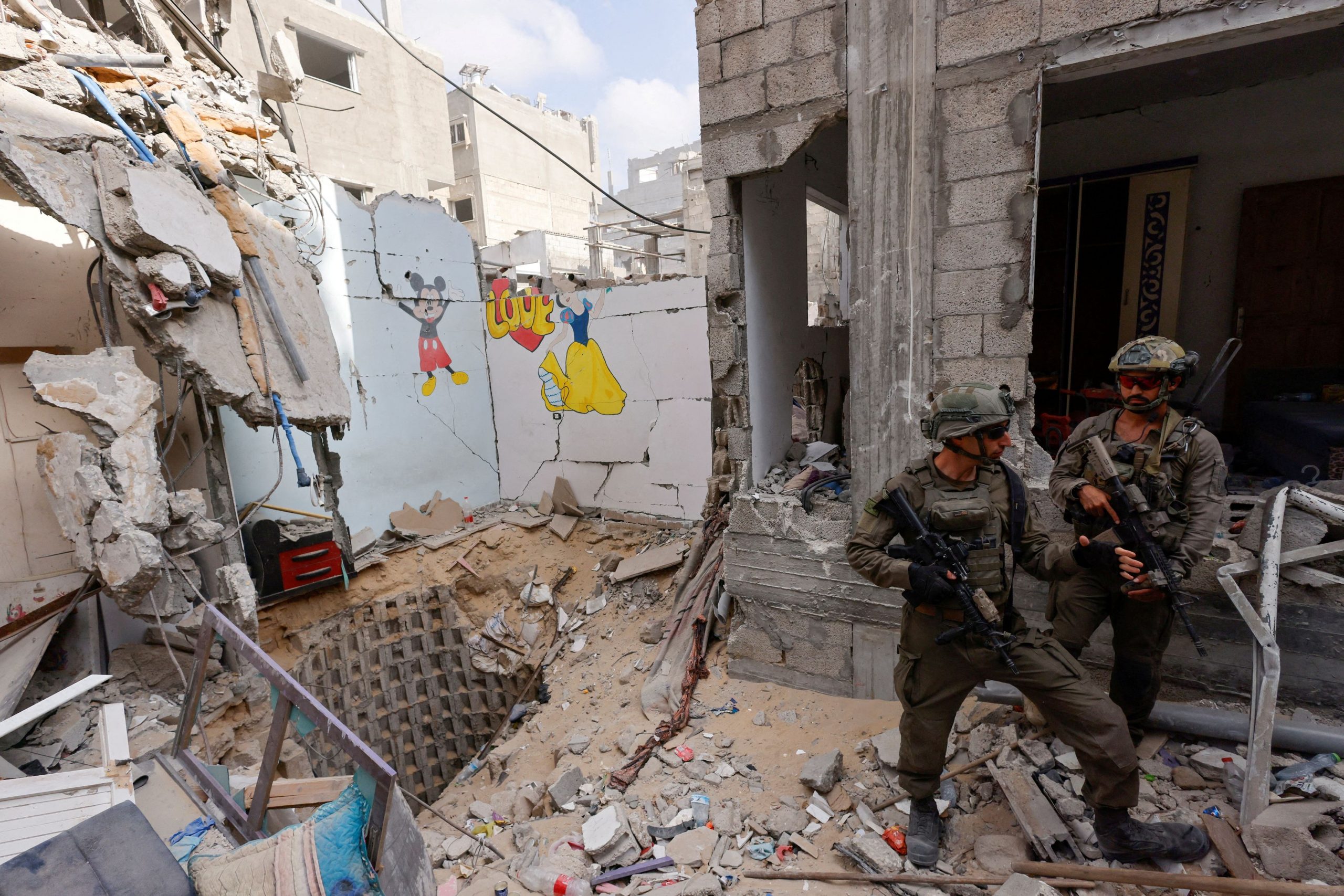Hamas has yielded to two of Israel’s key demands for a cease-fire deal in Gaza, Arab mediators said, raising hopes of an agreement that could release some hostages within days despite the repeated collapse of previous negotiations.
The militant group told mediators for the first time that it would agree to a deal that would allow Israeli forces to remain in Gaza temporarily when the fighting stops. Hamas also handed over a list of hostages, including U.S. citizens, whom it would release under a cease-fire pact, something it hasn’t done since the first truce in the conflict last year.
The new plan, proposed by Cairo and backed by the U.S., seeks to build on momentum generated by the cease-fire in Lebanon secured in November, which has broadly held despite both Israel and Hezbollah accusing each other of violations.
The office of Israeli Prime Minister Benjamin Netanyahu declined to comment.
Netanyahu said Monday there were certain developments in the cease-fire talks but it was too early to tell whether a deal was within reach.
Progress toward a deal comes after an Egyptian delegation visited Israel in late November, and after President-elect Donald Trump said on Truth Social earlier this month that there would be “hell to pay” in the Middle East if the hostages aren’t released before he assumes office in January.
As part of the latest proposal, Israel and Hamas are considering a 60-day cease-fire period that would see the release of up to 30 hostages being held in Gaza, including U.S. citizens, according to the mediators. In exchange, Israel would set free Palestinian prisoners and allow greater humanitarian aid to flow into Gaza, they said.
Negotiations picked up pace this week with an Israeli delegation visiting Cairo on Tuesday, days after Hamas officials were in the Egyptian capital. White House national security adviser Jake Sullivan is expected to travel to Israel, Egypt and Qatar this week to push for a deal, the mediators said.
Previous rounds of talks repeatedly faltered, but Hamas in recent weeks has displayed more flexibility on several key issues. The mediators said those include a willingness to accept Israeli forces remaining temporarily in the Philadelphi corridor, a tiny strip of land along Gaza’s border with Egypt, and the Netzarim corridor, which divides the enclave. The militant group has also agreed it wouldn’t run or have a presence in the Palestinian side of the Rafah crossing between Egypt and Gaza.
Hamas had long resisted those Israeli conditions for a deal, but has expressed openness to a compromise since its ally Hezbollah agreed to a cease-fire in Lebanon. That deal left Hamas, already weakened by Israel strikes on its leadership and fighters, isolated in its fight against Israel.
In October, Israel killed Yahya Sinwar , the Hamas leader who had insisted that a deal must include a complete end to the war and the retreat of all Israeli forces from Gaza. Hamas is now run by a collective leadership, including officials from the Palestinian diaspora, people familiar with the matter say, until a successor to Sinwar is chosen.
Still, Arab negotiators warned that Hamas could still pull out of the deal at the last moment, as it has done previously.
Hamas on Sunday submitted to mediators in Cairo a list of hostages that includes U.S. citizens, women, the elderly and captives with medical conditions, as well as the bodies of five dead hostages, Arab mediators said. It also compiled a list of Palestinian detainees held in Israeli prisons, whose release the group has demanded as part of the deal.
Hostages could be freed shortly after signing the deal, and more time would be given to Hamas to establish the names of remaining hostages, their whereabouts and their state of health, the mediators said.
“A prisoner exchange deal requires both parties, and thus the enemy must make a political decision to reach a cornerstone agreement,” Hamas said in a statement to The Wall Street Journal.
The last round of cease-fire talks had stalled over Netanyahu’s demands for Israeli forces to remain in the strategic corridors in Gaza. Other sticking points included whether any halt to fighting would be temporary or become permanent, how to secure the border between Gaza and Egypt and Israel’s ability to screen Palestinians returning to northern Gaza. Other issues were which Palestinian prisoners would be approved for release and the number of living hostages to be freed.
Netanyahu, in response to a reporter’s question about whether he was willing to give up Israel’s presence along the Philadelphi corridor to facilitate a deal, said the corridor should continue to be under Israel’s control.
Israeli negotiators are currently pushing for more hostages to be released in the initial phase of the cease-fire but have agreed to gradually withdraw from the Philadephi corridor. Israel has told negotiators it is willing to reposition Israeli forces in other parts of Gaza but rejected a demand to restrict its presence in other parts, including northern Gaza.
The war was triggered by the Hamas-led attacks on southern Israel on Oct. 7, 2023 that left 1,200 people dead and around 250 taken hostage. More than 44,000 people have been killed in Gaza since then, according to Palestinian health authorities, who don’t say how many were combatants.
Israel says there are now 96 hostages remaining in Gaza, most of them Israeli. They include dual nationals and at least 30 hostages whom Israel has concluded are no longer alive. Four additional hostages taken before Oct. 7, 2023 bring the total to 100 hostages.
Months of diplomatic efforts led by the U.S. to reach a deal to stop the violence and free the remaining hostages have stalled over deep disagreements about whether Israeli troops can remain in Gaza and whether there should be a permanent end to the fighting. The only negotiated pause in fighting took place in late November last year.
Arab negotiators believe after an initial cease-fire is reached, it would be difficult for Israel to restart the war in Gaza.
Write to Summer Said at summer.said@wsj.com



